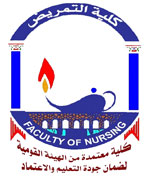A survey study was conducted on 520 fourth-year female students drawn
randomly from the Faculty of Nursing and Faculty of Education, Assiut University
during the academic year 2002 to assess their information about and attitudes toward
female circumcision (FC).Tools: An interview Arabic questiOlmaire sheet for data
collection was used to the520 girls under study. Results: The results indicate a
statistically significant difference in the prevalence of FC among both groups. Among
both groups the (daya) ranked highest as the main operator (44 %, 39.8% for nursing
and educational students, respectively). 15.5% of nursing students and 17.6 % of
educational students developed complications. 69.7% of nursing students and 57.7%
of educational students were circumcised between the ages 5 - 10 years. For 42.2% of
nursing students and 34.5% of educational students it was the mother who made the
decision. Moreover, half of two sample the practice was done mostly at home (68.8%
and 57.4% of nursing and educational students, respectively) followed by (16.5%,
27.7%) at hospital. For 10.09% of nursing students and 10.4% of educational students
the practice was done at private clinics. It was found that (45.8%, 72%) of the
students agreed to the practice of Fe. 64.2% of nursing students and 58.7% of
educational students reported that they were going to do the circumcise your daughter
in the future. The most cited sources of information for nursing students are medical
and nursing literature (30.9%), radio and TV (25%), books and magazines (19.2%).
The most cited sources of information for educational students were TV (27%) and
family (20.3%) with highly significant difference 0.0001. Our study suggested that
nursing students and educational students after graduation are the most contact by
community because the rationale for FC is multifaceted and complex. Nursing
students must be more knowledgably about FC to change mothers knowledge and
attitudes at hospital, MCH and community specially during home visit, more over
educational students more contact with parents of pupils at schools and aware him
about FC and complication.
Research Department
Research Journal
The New Egyptian Medicine
Research Member
Research Rank
2
Research Vol
Vol . 28, No. 6
Research Year
2003
Research Abstract

